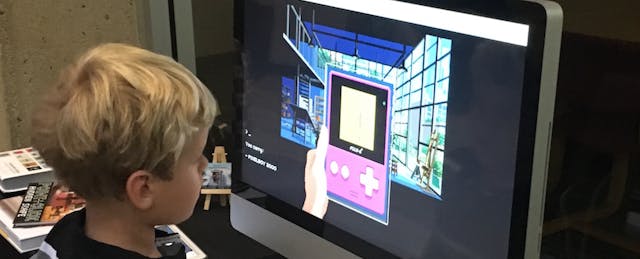Math and metacognition took the spotlight last week at Stanford’s Center for Education Research.
On July 29, the latest class at the university’s Learning, Design and Technology Program presented their thesis projects. Five of the 16 projects on display explored ways to teach students how to think about their own thinking and learning, commonly dubbed “metacognition.” Another popular idea focused focused on math instruction.
When asked “Why metacognition?” several of the Master’s candidates said they believe that if students have a thorough understanding of how they think, it could empower those learners to direct their learning. Erica Chesley, creator of the app Metacognizant, metacognition can foster an attitude of “I am capable of creating knowledge, not just receiving it,” similar to the popular concept of the Growth Mindset.
Metacognizant directly asks students to reflect on their learning by through biweekly student reflections on what they have learned so far. Chesley designed the product so that students can develop “learning strategies” through the five-minute exercises created by the app. Students review their materials from the past week and converse in groups about the the skills they’re focusing on.
Chesley herself was a middle school math teacher and wanted Metacognizant to combat the prevalent misconception among her students that “weren’t math people.” She hoped that by developing higher-order thinking skills, her product could discourage the binary understanding of math as something students either can understand immediately or never will.
“Reflection and metacognition become powerful beyond math itself,” Chesley said.
Curativity, another metacognition tool, provided students with craft materials and curriculum to deepen the impact of field trips. Anastassia Radeva, one of Curativity’s creators, said the product has three goals: collaboration, visual storytelling and creative confidence. The storytelling element focuses on the curation of physical objects to into an exhibit.

Pixel Art Academy, another game at the expo also its players to think about how they engage with education. The catch: They don’t have to be K-12 students. The game follows a student in a video game design program learning to create art. The game caters to what creator Matej Jan called the Pixel Art Community, a group of online video game designers who prefer the pixelated graphic styles akin to the original Donkey Kong or last year’s indie hit Undertale. According to Jan, the game currently has a player base of 2800, “mostly programmers who want to learn art.”
“It’s a role-playing game with real life consequences. Players have to think about their own skills and improve them,” he said. “Once they learn how to draw, they can make a game.”
Other metacognition tools were AskBetter, which aims to train students to ask more thoughtful questions, and MathBuddy, a social math game that connects girls to each other and aims to help them associate positive feelings with math through collaboration.
Among the tools, math was the most strongly represented academic subject, with three tools—Metacognizant, MathBuddy and Math Caper—focusing on it. Math Caper tasks students with solving art heists with math.
Math Caper creator Marc Campasano said he began designing the game with the goal of helping students solve traditional word problems. “Then I realized word problems themselves are inherently flawed. They require a ‘suspension of sense-making.’ For example, if you had five apples total, and three were red, in the real world you would count the remaining green ones. Word problems don’t take that logic into account.” He uses the tagline “Don’t solve math problems. Solve problems with math” on the game’s webpage.
Campasano said he was inspired by his mother’s experience as a math teacher and his own time tutoring students struggling with math. He said those students could not connect to word problems because of the silly, sometimes ridiculous scenarios. He also felt that math was such an in demand subject in 2016 because it permeated many discussions at the Graduate School of Education.
“There’s a general feeling that we’re not doing well in math as a country,” he said. “Especially with girls and young women. Girls in STEM was a big topic and inspiration this year. We all talked about it and felt we should correct it.”
Anastassia Radeva also felt that discussions among the cohort had influenced their final projects.
“We’re making the choice as grad students to learn about, think about and discuss learning,” she said. “That’s pushed our thinking and helped us grow, so we’re undoubtedly looking for ways to help others have that experience.”


